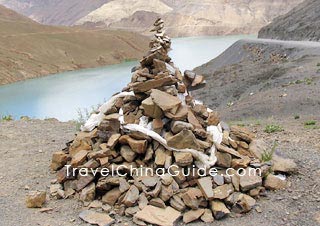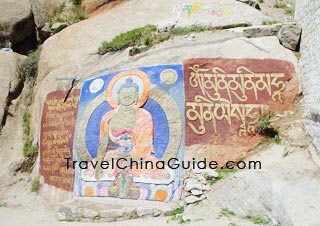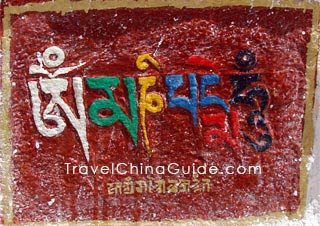Mani Stone
 |
| Mani Stone Mound |
In Qinghai, the largest Mani stone mound in the world is located in Xinzhai Village of Yushu Tibetan Autonomous Prefecture. Reportedly, the first Rinpoche (Living Buddha) of Jiana settled in Gujie Monastery in Xinzhai and built a Mani mound there. Also called Jiana or Xinzhai, Mani Stone Mound became bigger and bigger in the following 200 odd years, consisting of 2.5 billion stones. Tens of thousand of the mound are particularly precious which are engraved with words of law, calendar calculation, art theory, sutra texts and Buddha carvings.
Mani stones are regarded sacred as the sacrifice to the Buddha. In Tibetan area, Mani stones in different colors, shapes with different images and texts engraved can be seen everywhere. They showcase the artistic charm of Tibetan culture. Mani stone is called Man Zha in Tibetan, meaning Sanskrit mandala. In the vast land of Tibet with sparse population, Mani stone mounds become the prayer halls and shrines for the local.
Mani Stone handicraftsmen are peasants or herdsmen in spring, summer and autumn. They only engrave stones in winter. Long ago, Buddha paintings, incantations and Buddhist mottos are the main content. Enlightened by pictorial sutras from other countries, mani carving with both inscriptions and images were also made for illiteracy folks. There are commonly two kinds of Mani mounds: one is piled by rocks of different sizes and the other is characterized by blocks and pebbles carved with inscriptions and sculptures, which are upbuilt in an undulating line.
|
|
- Last updated on Aug. 15, 2025 by Demi Li -

